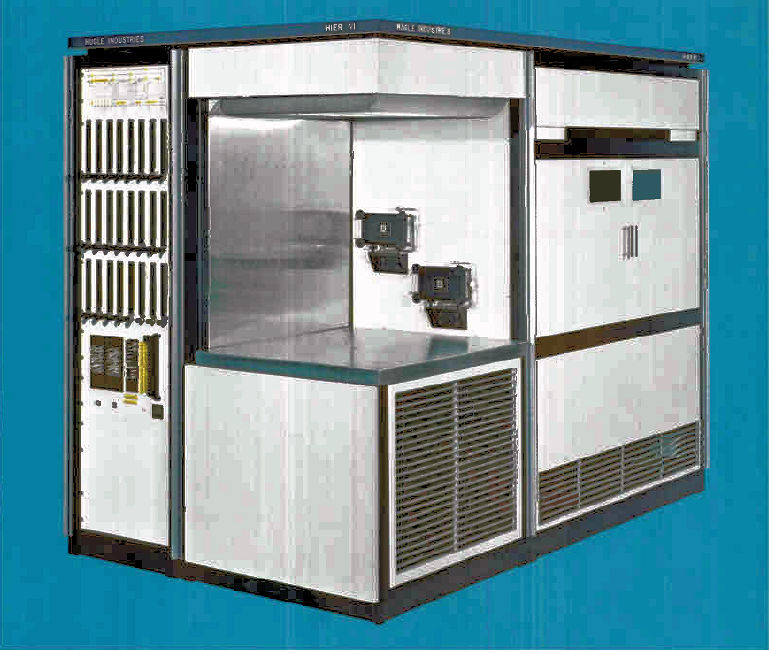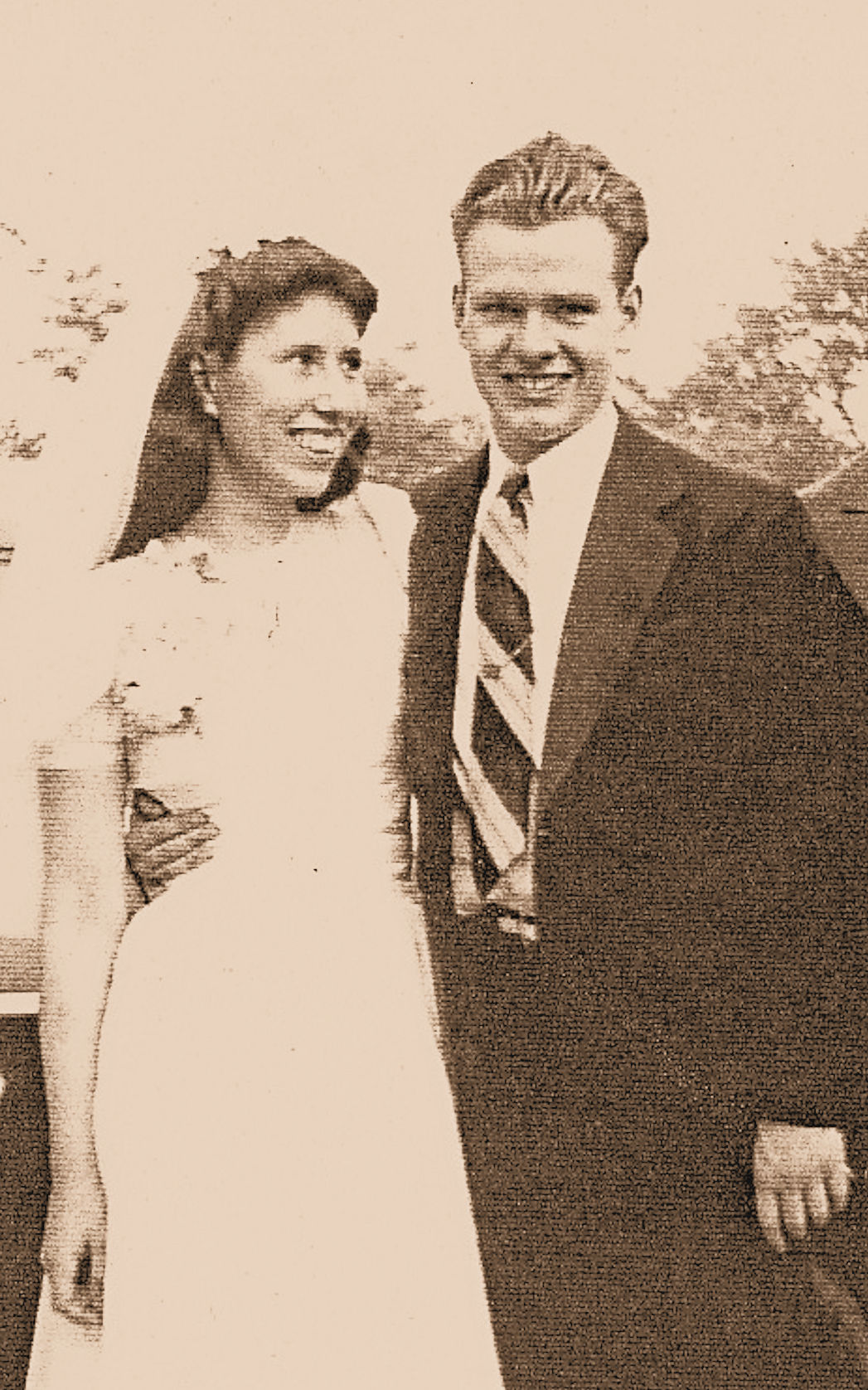Frances and Bill Hugle founded semiconductor equipment maker Hugle Industries in 1966. They’d decided to use the knowledge they’d accumulated in the semiconductor industry, starting with Westinghouse in the 1950s and extending through their founding of Siliconix in 1962 and Stewart-Warner Microcircuits in 1963, to consult for other semiconductor companies and to build semiconductor manufacturing equipment. Back then, semiconductor manufacturing was so new that there was no equipment ecosystem to draw upon. Large semiconductor makers including Bell Labs and Western Electric, Fairchild Semiconductor, IBM, Motorola, and Texas Instruments had all developed internal resources for developing semiconductor processing lines and fabricating the necessary equipment.
However, by the late 1960s, that situation was changing quickly. New semiconductor startups were springing up all over Silicon Valley, and these companies were too small to build their own manufacturing equipment. They needed off-the-shelf equipment, and they needed help in setting up their manufacturing lines. They needed an ecosystem. The Hugles found that their experience was in high demand.
As usual, Bill Hugle handled the business aspects of the new company and Frances Hugle designed the equipment. In June 1966, the same year that Hugle Industries was founded, the company announced its HIER epitaxial reactor, which grew semiconductor layers on as many as 25 1-inch wafers at the same time. Epitaxy is an essential process step for many types of semiconductor processes including the process for making silicon-gate MOS structures. One of Frances Hugle’s patents from her days at Siliconix dealt with epitaxial growth in transistor manufacturing. According to an oral history recorded by Applied Materials founder Mike McNeilly for the Computer History Museum, only Hugle Industries and Echo Labs of New Jersey were in the semiconductor manufacturing business at this point.
Also in 1966, Frances Hugle developed and later patented the idea for which she’s perhaps most famous: TAB (tape automated bonding) packaging. Before TAB packaging, IC makers connected their semiconductor die to the IC’s lead frame and pins using manually bonded gold wires. This manual process was prone to manufacturing defects. Vision-guided automatic wire bonders would eventually be invented to circumvent the human factor, but TAB packaging was even more efficient.
Francis Hugle’s idea was to replace gold bond wires with chemically etched metal lead frames attached to a continuous plastic film strip (initially Mylar but eventually Kapton). These metal lead frames would have raised bumps at the tips so that the entire lead frame could be bonded to the semiconductor chip with one swift, automated operation that eliminated the human factors associated with wire bonding and greatly reduced packaging costs. This innovation was the start of flip-chip interconnect and was a major innovation in semiconductor packaging that became broadly used.
By 1968, Hugle Industries was running full-page ads in magazines such as Electronics and Electronic Design. These ads contained a long list of available semiconductor manufacturing equipment including:
- HIER I, II, III, and IV epitaxial reactors
- EPI GRANDE epitaxial reactor
- D100 Series Epitaxial Doping Systems
- Model 100 Infrared Microscope
- Model 1300 Ultrasonic Wire Bonder
- Model 1400 Beam Lead Bonder
- Model 2000 Flip Chip Bonder
- PCD Process Controller

Hugle Industries HIER Epitaxial Reactor as advertised in 1968. Image Credit: Hugle Industries
Unfortunately, Frances Hugle passed away on May 24, 1968 at the age of 40 after a six-month illness. Bill Hugle and Hugle Industries weathered on. In 1969, an offshoot of Hugle Industries called Hugle Electronics started up in Japan and continues to operate to this day.
By 1970, Bill Hugle felt that the semiconductor equipment manufacturers were not getting enough attention from the big electronics trade shows such as Wescon, Nepcon, and the IEEE Electro conference in New York. Semiconductor equipment vendors found their trade show booths squeezed between representatives from unrelated companies, and booth traffic to these semiconductor equipment vendors suffered. Consequently, Bill Hugle and Fred Kulicke of equipment vendor Kulicke and Soffa decided to start a trade association specifically to support the growing semiconductor manufacturing equipment ecosystem. They called the organization that they founded the Semiconductor Equipment and Materials Institute, or SEMI. They also created a trade show dedicated to semiconductor equipment vendors and called it SEMICON. Both the SEMI organization and the SEMICON trade show have grown since then and both continue to operate today.
By 1972, Bill Hugle’s interests began to wander from electronics. That year, he ran for US Congress on a Democratic ticket. He favored withdrawing U.S. troops from Vietnam, ending criminal marijuana prosecution, strengthening consumer protection laws, and bolstering environmental laws. However, he dropped out of the race before the primary election took place, citing business commitments.
In 1983, a technology spy named James Harper was convicted of selling US Minuteman missile secrets to the Polish SB, the intelligence arm of the Polish government, while Poland was still in the Soviet Union’s sphere of influence. Harper provided the authorities with a supposed list of conspirators, and Bill Hugle’s name appeared on that list. Harper accused Hugle of helping to sell national defense secrets to a Polish intelligence officer. Hugle denied the accusation. Based on some public remarks, it appears that Hugle was in favor of selling equipment to semiconductor companies located in countries within the Soviet Union’s sphere of influence, but a federal grand jury investigated the matter and did not charge Bill Hugle with a crime.
Nevertheless, Bill Hugle appears to have been rattled by the whole affair and left the US to live in Switzerland. While there, he started yet another technology firm: Hugle Lithography. The idea was to use microlens arrays for the large-area, moderate-resolution imaging needed to manufacture flat-panel displays. In 1999, Hugle sold these ideas and the technology to SÜSS MicroTec Lithography, which is still operating today as SÜSS MicroTec. Bill Hugle returned to the US and passed away in 2003.
Over the years, Frances and Bill Hugle moved several times and started many technology companies, building their technology and business skills along the way. For as long as they were a couple, they stuck together. Twelve years after his death, a blog written by Francoise von Trapp titled “A Trip Down Silicon Valley’s Memory Lane with Bill Hugle’ described the Hugles’ relationship: “[Bill] Hugle always credited much of the success of Hugle industries to Frances, who he always referred to as the smartest person he had ever met…and he met quite a few smart people.”

Frances Sarnat and Bill Hugle married on June 22, 1947 and worked together as a team for more than two decades. During those years, they helped start the optical encoder industry, founded two early semiconductor companies (Siliconix and Stewart-Warner Microcircuits), and started Hugle Industries, one of the first semiconductor equipment manufacturers. Image credit: Jacob Loomis
There’s no firm documentation as to why the Hugles moved so frequently and fluidly through the electronics industry, but there are a few clues. For example, in a SEMI oral history, Mary Law, SEMI’s first administrative assistant, said: “He [Bill Hugle] used to come down to my office all the time. I think he was always hiding from his [second] wife to tell you the truth. [laughs] Because she was a really good businesswoman, and she was always trying to get him to settle down, and Bill was always flying from one thing to another… his big thing was PR and having an image.”
The Hugles’ daughter, Cheryl Hugle Maietta, is quoted in a San Francisco Chronicle obituary for Bill Hugle as saying, “They were surrounded by brilliant engineers who wanted to carouse, wanted to start companies, wanted to prove themselves. It was the right mix. It was the sort of situation my father loved: every year a new technology. It was always like Christmas morning. You never knew what you would end up with, and the surprise was part of the intoxication.”
In 2012, Jan Vardaman, the founder and president of TechSearch International, initiated an effort to establish an IEEE scholarship in Frances Hugle’s name. Rather than celebrating her company’s 25th anniversary with a party, she decided to fund a scholarship. Frances Hugle’s daughter, Linda Hugle, also helped to fund the scholarship by bequeathing part of her IRA to the scholarship fund. The scholarship’s goal is to encourage women who are studying engineering in college. As a major contributor to the early development of semiconductors and semiconductor manufacturing equipment and as the only woman to appear on Don Hoefler’s chart of early semiconductor companies and their founders, the goals of the IEEE Frances B Hugle Scholarship are right in line with the scholarship’s namesake.
Note: This history of Frances and Bill Hugle is sparsely documented on the Internet, and this series of articles would not have been possible without the aid and assistance of the Hugles’ grandson, Jake Loomis, and the founder of TechSearch, Jan Vardaman, who was instrumental in creating an IEEE Scholarship program in the name of Frances Hugle, funded in part by Jake Loomis’s mother and Frances Hugle’s daughter, Linda Hugle.
References
Oral History of Michael (Mike) A. McNeilly, Computer History Museum, July 20, 2004.
“Electronics Review,” Electronics Magazine, July 24, 1967, pp 36-37.
SEMI Oral History Interview: Mary Law, May, 2004.
Warren Richey, “How Polish spy agency got secret data on US Minuteman missile,” Christian Science Monitor, January 6, 1984.
Francoise von Trapp, “A Trip Down Silicon Valley’s Memory Lane with Bill Hugle,” 3DInCites, Apr 21, 2015.
Tyche Hendricks, “William Bell Hugle – inventor,” San Francisco Chronicle, Oct. 17, 2003.
Leslie Prives, “Coming in 2013: The Hugle Award,” IEEE Women in Engineering Magazine, December 2012, pp 41-43.







What a remarkable couple. Thanks for a really interesting story, Steve!
Thanks SmithChart. This one was a pleasure to write. –Steve
Wow! What a fascinating, well written story. Thank you for the hard work it took to dig up all of the information.
Thanks metasequoia. This story might not be finished yet. Stay tuned.